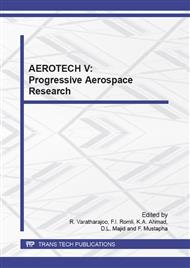p.355
p.363
p.370
p.376
p.382
p.388
p.395
p.399
p.407
HTHL Space Vehicles: Concepts and Control Problems
Abstract:
Integrated launch systems that include aerospace plane (ASP) and another heavy winged vehicle (plane or better Wing-in-Ground effect vehicle) as a booster are reviewed. It is shown that WIG-vehicle with a mass of 1500 ton or more is capable to carry ASP with initial mass of 500 ton and landing mass of 60-70 ton. Ekranoplane can provide ASP with the primary speed of Mach 0.5-0.65 in the required direction that allows lowering the design requirements to ASP's wing area and engines. A number of other advantages from the offered transport system are linked to possible use of WIG-vehicle at ASP landing. Heavy WIG-vehicle is unique vehicle for realizing the progressive idea of docking to descending ASP, allowing expanding opportunities of its landing. The problem of ASP horizontal landing without undercarriage by docking with other flying vehicle at the last stage of decent and the requirements to control systems for relative motion control of both vehicles are discussed. The progressive idea of joining space launch technologies with marine technologies is developed. It is especially important for countries with strongly limited areas of land territory but with easy access to the ocean.
Info:
Periodical:
Pages:
382-387
Citation:
Online since:
October 2014
Authors:
Price:
Сopyright:
© 2014 Trans Tech Publications Ltd. All Rights Reserved
Share:
Citation:


